Struggling with manual processes and scattered data holding your business back?
Every business aims to improve efficiency, uncover valuable insights, and drive sustainable growth. Yet, obstacles like disconnected systems, time-consuming manual tasks, and a lack of technical expertise can stand in the way.

Do you face these challenges?

Time-Consuming Manual Processes:
Reliance on manual workflows often leads to inefficiencies, errors, and increased operational costs. Tasks that could be automated consume valuable employee time, reducing overall productivity.
Disjointed Data Systems:
Managing data across multiple, unintegrated systems results in data silos, making it difficult to obtain a unified view of operations. This fragmentation hampers effective decision-making and can lead to inconsistencies.
Frustration from Inefficiencies:
Employees often experience dissatisfaction and decreased morale when bogged down by repetitive tasks and cumbersome processes. This frustration can lead to higher turnover rates and a disengaged workforce.
Lack of Actionable Insights:
Without integrated and accurate data, deriving meaningful insights becomes challenging. This lack of clarity can result in missed opportunities and an inability to respond swiftly to market changes.


Barrier to Innovation and Growth:
In an era where technology drives advancement, being constrained by outdated processes and systems contradicts the fundamental belief that businesses should have access to tools that foster innovation, streamline operations, and support scalable growth.
Addressing these challenges is essential for organisations aiming to enhance efficiency, empower their workforce, and maintain a competitive edge in the market.

Is there a solution?
At Alberon, we believe technology should work for you – not get in the way. That’s why we help organisations streamline operations, improve visibility, and unlock growth through tailored digital solutions.
By taking the time to understand your challenges, we deliver clear, practical strategies that make a real difference. We’re here to guide you through change and support your success every step of the way.
The Step-by-Step Process
Step 1
Consultation: Understanding Your Business Needs
- Conduct a comprehensive assessment of your current workflows, systems, and processes.
- Identify pain points, inefficiencies, and areas where automation or custom applications could add value.
- Engage with key stakeholders to understand business objectives and technical requirements.
Step 2
Implementation: Deploying Power Platform Solutions
- Design custom apps using Power Apps to address specific business challenges.
- Create automated workflows with Power Automate to streamline processes and reduce manual tasks.
- Develop interactive dashboards and reports with Power BI for enhanced data visualisation and decision-making.
Step 3
Support: Ensuring Seamless Adoption and Improvements
- Provide comprehensive training sessions for end-users and administrators to ensure effective utilisation of the new tools.
- Offer resources and documentation to support ongoing learning and self-sufficiency.
- Regularly review and assess the effectiveness of implemented solutions.

What can be at stake?
1. Reduced Operational Efficiency
Manual processes are inherently slow and prone to errors, leading to operational bottlenecks. Tasks that could be automated consume valuable employee time, reducing overall productivity and increasing the likelihood of mistakes. This inefficiency can result in delays and increased operational costs.
2. Increased Operational Costs
Relying on manual workflows often necessitates a larger workforce to handle repetitive tasks, leading to higher labour expenses. Additionally, the costs associated with correcting errors from manual processes can accumulate, further straining financial resources.
3. Elevated Risk of Errors and Compliance Issues
Manual data handling increases the likelihood of inaccuracies, which can lead to compliance violations, especially in regulated industries. Such errors not only result in financial penalties but can also damage the organization’s reputation
What are the Core Pilers of Microsoft Power Platform:
Power BI – Transform Data into Actionable Insights
Power BI allows businesses to visualise and analyse data for smarter decision-making:
- Interactive Dashboards – Real-time data tracking with custom reports.
- Data Integration – Connects to multiple data sources for a complete view.
- AI-Powered Insights – Advanced analytics and predictive modelling.



Power Apps – Build Custom Business Applications
Power Apps enables businesses to create tailored applications with minimal coding:
- Low-Code Development – Build apps quickly without extensive coding knowledge.
- Seamless Integration – Connect with Microsoft 365, and third-party systems.
- Mobile-Ready – Deploy applications across desktop, tablet, and mobile devices.
Power Automate – Automate and Streamline Workflows
Power Automate helps businesses save time and reduce manual work through automation:
- Process Automation – Automate approvals, notifications, and repetitive tasks.
- AI-Driven Automation – Smart triggers and AI-powered workflow enhancements.
- Seamless Connectivity – Integrates with Microsoft 365, Dynamics 365, and external platforms.


Copilot Agents – AI-Driven Business Assistance
Copilot Agents bring AI-powered automation to business operations:
- Conversational AI – Smart virtual agents to assist customers and employees.
- Custom AI Workflows – Automate complex processes beyond traditional automation.
- Enhanced Decision Support – AI-generated recommendations based on real-time data.
Here are some Frequently asked questions from our customers
Ready to Improve your Business Productivity
Get a trusted partner to navigate your digital transformation. With Alberon, you can ensure a smooth transition, clear communication, and peace of mind.
